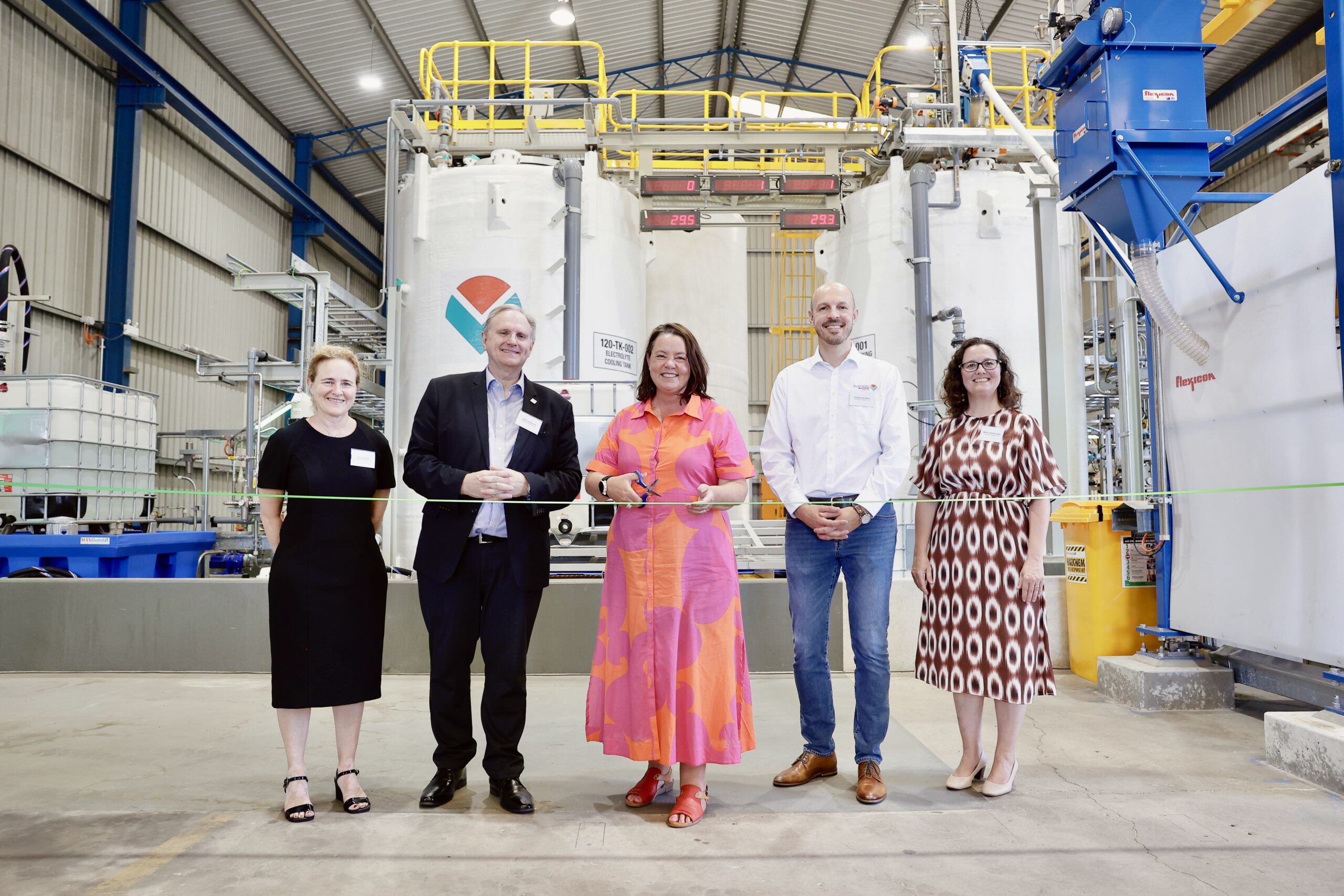AVL cuts the ribbon on brand new vanadium electrolyte manufacturing facility
Mining
Mining
Australian Vanadium has passed a major milestone in its “pit to battery” strategy with the official unveiling of its dedicated vanadium electrolyte facility in the northern Perth suburb of Wangara.
Just a day after the company’s proposed 14-for-1 merger with neighbouring developer Technology Metals Australia (ASX:TMT) received a crucial shareholder vote of approval, Australian Vanadium (ASX:AVL) declared its newly constructed vanadium electrolyte manufacturing plant open for business.
Federal Resources Minister Madeleine King was on hand to cut the green ribbon at the Perth-based factory, alongside a host of other notable government dignitaries, including new-ish WA State Minister for Mines and Petroleum David Michael and US Deputy Consul General Lu Zhou.
The new vanadium electrolyte facility has the potential to produce up to 33MWh of high-purity electrolyte per annum and will be an important feeder to meet the growing demands of the vanadium flow battery (VFB) market.
Also on display at the opening ceremony attended by more than 140 people was the 78kW/220kWh VFB manufactured by AIM-listed Invinity Energy Systems which is destined for the Horizon Power project in Kununurra in WA’s Kimberley region, as well as a prototype residential 5kW/15kWh VFB.
AVL was awarded a $3.69 million grant from the Australian Federal Government in 2021, part of which was to be used to build and operate a commercial vanadium electrolyte facility like the one opened in Perth yesterday.
Construction was overseen by WA-based engineering firm Primero Group, a subsidiary of NRW Holdings (ASX: NWH).
The plant design was modelled on the proven electrolyte manufacturing technology deployed by US Vanadium (USV), a leading supplier of vanadium electrolyte for the North American market.

AVL holds the exclusive licence for Australia and New Zealand to use USV’s vanadium electrolyte processing technology. Until production starts from AVL’s processing hub near Geraldton in WA’s Mid West, vanadium oxide feedstock for the electrolyte facility will be sourced from USV’s production facility in the US.
Vanadium electrolyte produced by the new plant will initially be employed in VFB projects being developed by AVL’s wholly owned subsidiary VSUN Energy and will allow product to be qualified with global VFB manufacturers.
According to Guidehouse Insights, demand for vanadium electrolyte is expected to grow rapidly over the coming years, particularly in the Asia-Pacific region where annual VFB energy capacity is forecast to reach ~14.5GWh by 2031.
AVL’s planned production from its proposed mine near Meekatharra will account for ~5% of the world’s vanadium supply.
Currently there is no vanadium – primarily used to strengthen steel but rapidly emerging as a key ingredient in battery and energy storage – being mined anywhere in Australia.
China (60% of global supply), Russia (15%) and South Africa (10%) are the dominant producers.
Speaking at the opening of the vanadium electrolyte manufacturing facility, Minister King welcomed the emergence of a new industry for Australia.
“Vanadium flow batteries were invented in Australia – and Australian Vanadium will play a key role in the energy transition,” she said.
“Vanadium production is highly concentrated internationally and it is on Australia’s ‘critical minerals’ list. The Australian Government supports critical minerals projects through measures including the Critical Minerals Facility and the Northern Australia Infrastructure Fund.”